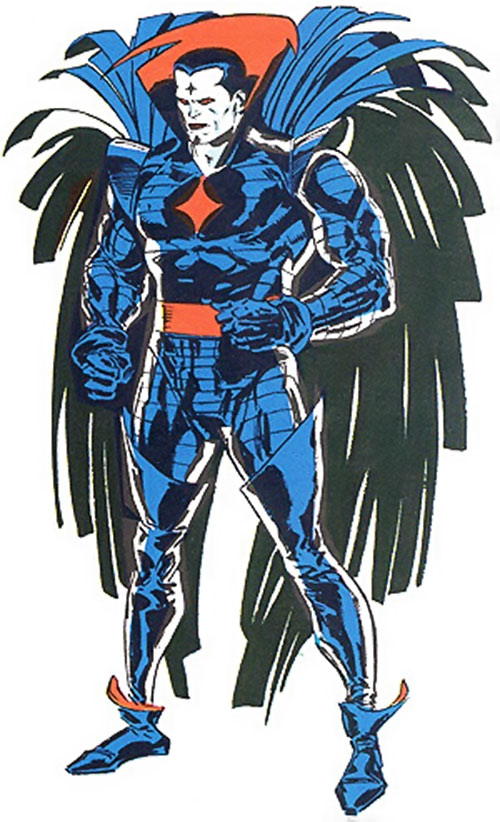Everything Is Sinister
“Everything Is Sinister”
Uncanny X-Men Vol 2 #1-3 (2012)
Written by Kieron Gillen
Pencils by Carlos Pacheco with Jorge Molina, Rodney Buchemi, and Paco Diaz
By the time Kieron Gillen got the opportunity to write Mister Sinister, the character was firmly established as one of the most prominent X-Men antagonists, but also one of the most confusing. Sinister, who was originally introduced by Chris Claremont and Marc Silvestri as the mysterious new archvillain of the X-Men following the rehabilitation of Magneto, was never given a concrete backstory during Claremont’s original tenure on the series. He’s responsible for sending his Marauders to murder the Morlocks in the “Mutant Massacre,” but we never find out why until a retcon a decade after that story was published. In “Inferno” he’s revealed to be the mastermind behind the creation of the Jean Grey clone Madelyne Pryor in an elaborate scheme to mate Jean’s genetic potential with that of Cyclops’ despite Jean’s seeming death at the time he set the plan in motion. Claremont’s Sinister isn’t a character so much as a plot driver, and given his assumption that he would be writing X-Men indefinitely, there’s a sense that he was going to get around to the origin and motivations of Sinister at some point in the ‘90s.
Claremont set the basic template for Mister Sinister – master manipulator, mad scientist, obsessed with cloning, and knowingly camp in his villainy. Silvestri’s brilliant original design for the character looked like Colossus as a goth glam rocker. Later writers built on this with retcons, most notably that he was not actually a mutant but a Victorian scientist named Nathaniel Essex who was genetically enhanced by Apocalypse. Fabian Nicieza deepened Sinister’s obsession with Cyclops’ family line, but also cemented the trope that Sinister is always plotting something but mostly just taunts the X-Men rather than do anything actually scary. Writers just kept giving Sinister more powers too, to the point where it just seemed like he was borderline omnipotent. (But yet, always so easily defeated?)
Kieron Gillen took it upon himself to take everything previous writers had done with Sinister and not just make sense of it all but position him as a thematically logical archnemesis for the X-Men. He doesn’t contradict anything important about the character – he’s an amoral Victorian dandy mad scientist obsessed with mutants – but he revealed what he’s been working towards all this time. Basically, he’s been tinkering with mutant genes and cloning all this time to turn himself into a hive mind species. It’s the ultimate expression of egomania – he wants to replace both humans and mutants on earth with endless iterations of himself in a distinctly British version of a fascist utopia. It’s “God made us in His image” taken very literally by someone with the means to be like “Oh, I can do that too.”
Gillen had finally made sense of Sinister’s motivation, but the real fun is in how he wrote his dialogue. The character had always been written as a pompous megalomaniac prone to monologues and melodramatic gestures, but Gillen really leaned into it and emphasized that when it comes down to it, he’s just a messy bitch who lives for drama. It’s all a big game to him, and he loves playing the villain. He chose the name Mister Sinister! Gillen writes Sinister as a demented sort of artist, and playing the part of over-the-top scenery-chewing supervillain is a deliberate part of his persona. He’s not about dogma or nobility like Apocalypse or Magneto – for him it’s just ego, a barely-concealed erotic obsession with Cyclops and Jean Grey, and a perverse sense of fun.
A large portion of “Everything Is Sinister” is basically Mister Sinister doing a classic “villain explains his evil plot to the heroes” monologue, and he’s loving every moment of it. He actually mentions on panel that he’s been dying to tell the X-Men – and specifically Cyclops – all about it for a very long time. It’s a performance, and he knows that this particular story is just a dress rehearsal for a bigger arc later on in Gillen’s run. When Sinister taunts Cyclops at the end of this arc – “Next time we talk, you’ll be more hated than I’ve ever been” – he’s absolutely correct, which would imply that Sinister is a something of a metatextual character. He knows what Gillen knows about editorial plans, but the other characters are on the same page as the reader.
Gillen’s version of Mister Sinister has become the dominant iteration of the character since this story was published, but some writers have done better with this than others. Jonathan Hickman used a version of Sinister in Secret Wars to great effect, pushing him even further into bitchy camp. (Hickman loves writing a petty elitist, so of course he’d gravitate to the Gillen Sinister.)
But still, this hasn’t stopped writers like Jeff Lemire, Cullen Bunn, and Matthew Rosenberg from writing Mister Sinister more recently as a gloating chump, and essentially as a “mini-boss” in their larger narratives. Of course, part of the beauty of Gillen’s conception of the character is that it makes sense of the existence of off-model Sinisters showing up in lesser comics. He’s basically given the Mister Sinister the canonical equivalent of Doctor Doom’s Doombot doubles. (“Oh, that wasn’t the true Doom, that was just a Doombot” has been a way for writers to retcon previous stories they dislike since John Byrne wrote Fantastic Four in the ‘80s.)
Of course, given that Hickman is now in charge of the X-Men mythos going forward and is an avowed fan of Gillen’s concept for Mister Sinister, it can be taken as a given that there won’t be any dull or wasted uses of the character for at least a few years to come. The future, as the character is wont to say, is distinctly Sinister.



